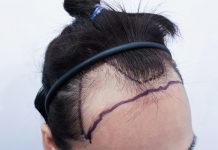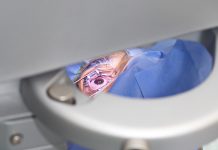Sapphire FUE Hair Transplant
Sapphire FUE hair transplant in Turkey, its average cost, Sapphire FUE transplantation procedure and everything you must know about hair loss are explained.
What Is Sapphire FUE Hair Transplant?
Sapphire FUE hair transplant, also referred to as “Sapphire FUE hair transplant method”, stands for the use of sapphire micro blades instead of steel ones on the recipient area during hair replacement operation. Being one of the most successful techniques of hair transplantation, it is a method almost pioneered by Turkey. Sapphire FUE hair transplant technique is mostly conducted in Istanbul and it might cost between £600 – £12,000. With Sapphire FUE hair transplant, patients are also able to experience a much shorter recovery period.
Hair Loss and Its Effects on People
Hair loss is a problem that can bother many people. Regardless of age, hair loss can be experienced by many and its causes may vary from hormonal imbalances to genetic factors. Having many different possible reasons, hair loss can be treated thanks to the advancements in technology and plastic surgery. Left untreated, it might cause extreme distress and even depression, especially in adolescent individuals. It might possibly lower one’s self-esteem and confidence, giving way to social anxiety and harmful behaviour. People might wish to leave social gatherings early or to never attend them at all. They may obsessively try to hide their hair by wearing hats.
These obsessive behavioural patterns might as well lead to detrimental levels of stress in situations where they cannot put on a cap. In all aspects, no one deserves such harsh treatment of their own selves, even if it’s them who are doing it. During such a tough time, a hair transplantation procedure might be the cure they are looking for. Gathering many different techniques under its branches, hair transplantation usually results in success. FUE, a technique in itself, stands for Follicular Unit Extraction. Sapphire FUE hair transplant is more like a modified application of FUE.
What Is the Difference Between FUE and Sapphire FUE Hair Transplant?
First thing first, one must shortly mention FUE method and how it is conducted. By doing so, one can be provided with more insight in relation to Sapphire FUE hair transplant method.
What Is FUE?
During FUE, hair follicles are extracted from the chosen donor area to be placed on the recipient area. This is almost the case nearly for all types of hair transplantation operations. However, the application of the deed changes in FUE. The surgery is performed with an automatic hollow needle, the micro motor, which has a diameter of 0.6 to 0.9 millimetres. FUE method is known for guaranteeing more natural-looking results for patients. And then, thanks to the recent advancements, we are introduced to the Sapphire FUE hair transplant technique where these automated micro blades are made of actual sapphire.
Sapphire FUE Hair Transplant
The size of these sapphire blades may vary from 0.8 to 1.5 millimetres. It is usually adjusted specially for each patient in accordance with the structural needs of their hair. FUE method that used steel blades was able to open U-shaped hair transplantation channels only. Yet, with these groundbreaking sapphire blades, doctors are able to open V-shaped channels on the scalp of the patients. As a result, those smaller V shapes cause less tissue damage on the skin of your head. These special blades are designed for causing the minimal scab formation; hence speeding up your recovery phase. In addition to these, the channels that are created by micro blades carry detrimental importance. The shapes of the microchannels determine the naturalness of your results in terms of appearance.
The density of the new hair greatly depends on those micro incisions. Consequently, opening incisions on the skin of the head is considered the most important part in order to get successful outcomes. Sapphire V shaped blades carry out this task in an excellent way. The incisions it opens are usually the same size as your hair follicles so that more channels can be opened on the skin. This asset makes it easier for hair follicles to be transplanted in a much closer range. As a matter of fact, results manifest in a much more natural way.
Benefits of Sapphire FUE Hair Transplant
Sapphire FUE hair transplant technique results in less bleeding. As a conclusion, it can easily be said that Sapphire FUE hair transplant is an exceedingly gentle method for the patients. Since it is gentler and softer on the skin, it also reduces the chances of catching post-operative infections as well as reducing the risk of major re-bleeding. Moreover, patients report a lesser pain score after the operation. Their micro-wounds heal at a way faster pace.
The success rate of the surgery also increases with this technique. Grafts that are placed in the follicles are able to maintain their growing directions, so their chance of failure decreases. Also, grafts do not have much chance to contact with the external side of the skin as those sapphire blades are exceedingly small, thin and durable. Hence, when the channels are being opened, there is much less vibration to disturb the tissues. It makes the operation even more likely to succeed. The most important aspect of FUE hair transplantation conducted with sapphire blades is that the procedure almost cancels out the risk of skin trauma, scalp tissue damage and likely complications which are usually observed after normal FUE transplantation procedures. This beneficial aspect stems from the quality of sapphire blades that have antibacterial properties.
With Sapphire FUE transplant technique, 80-120 grafts can be placed per centimetre square of the head. In only FUE technique, though, this number drops to 20-40 grafts.
Patients should not forget the fact that the quality of their donor area determines the number of grafts to be taken out. For one patient this number can be 4000 grafts whereas for another the doctors can take 6000 grafts out. Regardless of the patient, the doctors always endeavour to take the maximum amount of grafts.
Things You Should Consider Before the Sapphire FUE Hair Transplant
Before you decide on having any type of hair implantation, you must consider and revise some facts regarding your overall health and the professionals you are going to consult with. As it is valid for all types of hair transplantation procedures, the root cause of your hair loss must be identified in advance so that you can decide with which solution to proceed.
Overall Health:
- If you are being treated with chemotherapy or radiation treatment, you are not an eligible applicant for this procedure. Your will start to grow back after your treatment is no longer needed.
- If you are suffering from hormonal imbalances that are causing you to shed hair, those non-harmonious functions must be treated in the first place. In order to identify the problem, you must see your doctor first. They are probably going to run some blood and hormone tests to detect to real cause of the issue. You can also be suffering from vitamin or mineral deficiencies. Once your test results arrive, your doctor will be able to interpret them and he/she will start your treatment accordingly. Your hair will most likely start to grow back after you refill your deficient nutrient deposits or after your hormones get back on track.
- There is no specific age limit for hair implantation but you should book a consultation appointment first. Your doctor will evaluate the condition of your hair and of your hair loss, he/she will then decide on the therapy.
Your Remaining Hair:
- If you have lost a great deal of your hair, for instance, it might not be possible for you to go under Sapphire FUE hair transplant or any other hair transplantation surgeries. The amount of the remaining, healthy hair follicles must be enough to provide a donor area for the balding, recipient part of the head. If you are out of these follicles, it means that there is nothing to transfer and to implant for the treatment.
Lifestyle Changes:
- If you are a smoker, you should immediately stop smoking. It is crucial that you do not smoke before and after the six weeks of your operation. Smoking during this process might result in terrible outcomes. It is highly possible that it is going to prevent you from recovery. It also increases your chances of getting post-operative infections or developing complications.
- You should also stop using medicines that operate as blood thinners. These medicines can be listed as Advil, Ibuprofen or aspirin.
- If the skin on your head is injured, burnt or have open wounds on, you cannot have hair transplantation. The quality of the skin in your donor area matters a great deal.
Choosing a Surgeon
You must be extra careful in your search of a Sapphire FUE hair transplant surgeon to conduct this procedure. You should be cautious against any fake internet advertisements and underdeveloped clinics. Some are choosing to pay for internet advertisements rather than letting their success and patients talk, so you should pay attention. Once you find a proper clinic, you should do some research on the place you have chosen. You should check the comments of their previous patients to see if there is any negative or disastrous one.
First Consultation Appointment
Your next step should be arranging a consultation appointment with your doctor. During this appointment, your doctor may demand an overall health report including your blood and hormone checks. He/she will ask you if you have any chronic illnesses. These are crucial points for your Sapphire FUE hair transplant surgeon’s information. They are going to learn about the medications you are currently using or the ones you have recently used. Any other herbal remedies or vitamins also count and your doctor should be informed about it. You should openly discuss what you want from the results and be comfortable talking about these with your doctor. Under all circumstances, your expectations must be as realistic as possible since every person has a unique treatment process and a unique result. You can demand to see the before and after recordings of your doctor’s previous patients if you would like to.
The Day of the Sapphire FUE Hair Transplant
During Sapphire FUE hair transplant, doctors most often prefer local anaesthesia for their patients. You are most probably going to have local anaesthesia and you are not going to feel any pain or discomfort. While the local anaesthesia is being applied, it is the most painful part of the surgery. Yet, it should only take 3-4 minutes until your scalp is fully sedated. If you make it through local anaesthesia, the rest is completely easy. Oral medicines could also be provided for the comfort of the patients. Some of your hair will be shaven in order to conduct the procedure more effectively. Once the sedation with local anaesthesia is performed, the actual deed of surgery is going to take place.
The sapphire micro blade will gather grafts from the donor site and it will transfer them to the recipient site by opening V shaped incisions for implantation. This will take approximately 5 or 6 hours. After the Sapphire FUE hair transplant surgery, special head bandages must be worn. You are not going to be required to stay at hospital for additional care. You can go home right after the operation but it is recommended that you arrange for someone to accompany you during the process. After 2 days, most patients are able to return to their daily, normal activities. But then again patients should be extremely careful in order not to injure their newly implanted hair. Operated areas should be kept from any kind of damage and contact at least for a few days. You need to pay special attention to wearing loose headed or buttoned tops. The scabs, however, will most presumably be present on the scalp for 12 to 15 days. Usually, patients are required to wash their hair gently with a special for 10 days and on the 11th day they need to apply a cream to soften the scabs on their head.
Recovery and Aftercare
There are certain things that are valid for all recovery periods in the case of hair transplants. You should prepare loose and comfortable t-shirts or pieces that you can take off by unbuttoning. You should follow the aftercare rules of general hair transplantation process since all of it applies to this situation. During recovery, around your third month, your newly-transplanted hair will start to fall off. This is completely normal. It will then start to regrow in a short time. Since it is a Sapphire FUE hair transplant procedure, your recovery is going to be much easier than other hair transplantation procedures. The tissue damage and the skin trauma will be at its lowest level and you will not feel as much pain as a normal patient. Your doctor might prescribe painkillers for you just in case.
- Your bandages will most likely be removed after 2 days. However, you should wait for your doctor’s instruction to do this.
- Your hair and your scalp should not be washed at least for a week following the Sapphire FUE hair transplant surgery. When it is finally safe for washing, you should be totally gentle and soft to prevent irritation. Your surgeon might prescribe you special shampoos and hair lotions. You will be expected to use them.
- For at least a month, you should also be gentle and soft if you ever brush your hair. You should pay extra attention to not to brush it in a rough manner.
- Your scalp should be getting enough air. Due to this reason, you should not be wearing hats or tight beanies for a few weeks.
- You can start exercising again after a couple of weeks. This is because exercise will cause you to sweat and you will not be able to take a shower right away. The sweat and dirty stuff might clog your pores and follicles.
- If you ever experience swelling, you can use ice packs to relieve it. However, with Sapphire FUE hair transplant, oedema is quite a rare issue.
- You should avoid extreme heat or cold, too.
- During your recovery, quitting smoking and alcohol carries vital importance. These things will make your wounds heal slower and they can even cause complications.
- If you are prone to catching infections or if you catch any after the surgery, your doctor will prescribe you antibiotics and painkillers. You can also be prescribed other medications that are able to promote hair growth.
- You can go back to work after the first day. Yet, if your work demands physical power and heavy labour you should wait more.
Possible Risks and Complications
With every surgery, patients and doctors are facing with the risks of possible complications. Yet, FUE in itself is already considered as a safe method of hair transplantation. This is due to the fact that the incisions that are opened during the procedure are not serious wounds and cuts. With Sapphire FUE hair transplant, a much softer method that does not disturb the tissues around, this risk is nearly cancelled out. The complications are most likely to occur during the surgery but they are completely preventable. If you have chosen an experienced doctor and handed all of required health reports in time, then you do not have to worry about these possible bad results. If you apply all of your surgeon’s instructions with loyalty, you will not have to face with bad consequences.
Nevertheless, if any unfortunate series of complications took place, they would probably be like as mentioned below:
- Infections – They can easily be treated with medications.
- Leaks around the surgical parts.
- Swelling, itchy sensations, aches.
- Bleeding – Stitches might be necessary.
- Numbness, loss of sensation in operated parts of the head – If this occurs it might also be completely normal. It is usually not a problem to feel like this for 3-18 months.
- Bruising around the eyes.
- Hypopigmentation in the donor area.
- Acute effluvium.
- Keloid.
- Necrosis.
- Epithelial cysts.
- Persistent pain and numbness.
- Unnatural appearance.
- Poor hair line.
- Oedema in recipient area.
- Folliculitis – Infection and inflammation of hair follicles.
If you face any of these problems, you should immediately call your doctor and visit your clinic. Most of these issues can be treated with proper care and medication.
Frequently Asked Questions About Sapphire FUE Hair Transplant
How much does Sapphire FUE hair transplant cost?
The cost of Sapphire FUE hair transplant might show variance depending on the experience of your surgeon, the quality of your chosen clinic and the region where you are receiving the treatment. The cost is generally between £600 and £12,000.
What are the advantages of Sapphire FUE hair transplant in comparison to FUE? Why should I prefer one to another?
- The risk of scalp trauma and scalp tissue damage greatly decreases with Sapphire FUE hair transplant. Sapphire blade’s sharpness, durability and its antiseptic qualities make this miracle happen.
- On the other hand, sapphire blades make the surgeons able to implant hair more densely. Individuals who are suffering from extreme hair loss can benefit from this and they can, too, enjoy a natural-looking appearance.
- In addition to these, tissues around and in the implantation site recover more quickly in comparison to steel blades.
- Since all of the channels are being opened at the same length of hair follicles, you hair will not grow in an unwanted direction after the transplantation procedure.
Is there an age limit set for Sapphire FUE transplant?
Your doctor is going to evaluate your position as an applicant for this procedure during your initial consultation appointment. The quality of your hair and the stage of your hair loss will first be determined by your doctor. Your overall health should not be under serious threat. Other than that, there is no such reason or a limit for this procedure.
How long does Sapphire FUE hair transplant procedure take?
It depends on the quantity of the grafts that are going to be transplanted. It usually lasts between 5 or 6 hours.
Will my hair grow back in the donor area after the implantation?
The main source of donor hair is usually located at the back of the patient’s head. From this donor site, grafts are being taken during the process and they are transferred to the recipient area. The reason doctors choose these parts of the head as donor sites is because the follicles in the back of your head or the ones between your ears are resilient to hair loss. Once hair follicles are extracted from this region, they will not grow back there again. Due to this fact, they are taken out as homogeneously as possible in order not to disturb this area’s natural harmony. They will most probably not be noticed after the procedure.
Is Sapphire FUE hair transplant painful?
All types of hair transplants are usually conducted with local anaesthesia. It means that you will not feel any pain in the operated area. The most painful part is while your scalp is being sedated with local anaesthetics, yet it only takes 3-4 minutes. Some clinics offer an option to carry the procedure out with sedation to make their patients more comfortable. With sedation, too, patients do not feel any discomfort or pain during the surgery. They are going to remain wide awake and will not feel the grafts while they are being extracted.
When can I observe the results?
Hair transplantation is a treatment that requires a lot of patience. You should try to stay optimistic and be patient until you start to observe your full results. You should know that it will take a long time. This whole period usually extends to 12 months with the recovery, healing and growth of your new hairs. You will experience a shock hair loss 2-3 weeks following the surgery. This is completely normal. It stems from the fact that your new hair grafts are entering a resting phase. As a result, the hair is lost in the process. There is absolutely nothing to worry about.
After this shock hair loss period, new hair will start to grow and healthy appearance will be observable. Finally, after 2 or 2.5 months your hair will adapt to the normal growth cycle and it will start growing roughly 1.5 centimetres every month. Around month 9, you will start to notice improvements in the texture of your transplanted hair and finally after 1 year it will get gradually thicker and blend with your own natural hair.
How long will my results last?
Hair transplantation results last for a life time unless a serious problem occurs. For instance, if you lose your hair due to hormonal imbalances and you have transplantation without treating the actual cause, your hair loss can continue even after the operation.
Will I lose hair except for the Shock Hair Loss?
If you develop other internal conditions or imbalances, you might as well lose your transplanted hair. However, this is not really likely since all of those possible reasons will be treated in the first place before the operation.
How long should I wait for going back to work after Sapphire FUE hair transplant?
Most of the patients are able to go back to work after 2 days. It depends on the depiction of your profession. If you are a heavy labour worker, you should wait longer.
What should I do if I experience pain?
You can always use the painkillers that your doctor prescribed for you. Yet, with Sapphire FUE hair transplant, patients do not usually report severe or disturbing pain.



















